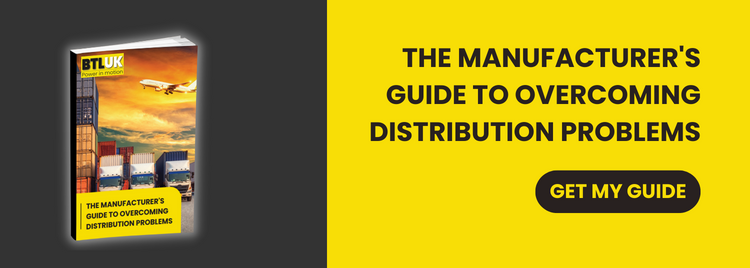
What Is A Power Transmission Roller Chain?
Roller chains are a key component in the world of mechanical engineering, used to transmit energy from the motor to the machine's driven components. It is a simple process that involves a chain made of cylindrical rollers and the links that connect them – and will be instantly familiar to anyone who has ridden a bicycle or motorbike. The power transmission roller chains used in other industrial and commercial applications operate on exactly the same principle.
In this article, we will explore the ins and outs of chain drive power transmission, providing an overview of the classic roller chain design and how it is used to transmit mechanical energy through a drive mechanism.
What Is A Roller Chain And How Does It Work?
A roller chain comprises several interlocking cylindrical rollers that are held together by link plates. When powered – e.g. by a motor or by someone turning the pedals of a pushbike – it transfers energy through the rollers that are in contact with the teeth of the sprockets. Roller chain transmission is a popular technology, widely used in different mechanical applications and machinery, from construction plant to manufacturing machines. Most roller chains are self-lubricating, which helps to reduce wear and increase longevity.
Power Transmission Chain Types
Roller chains come in various types, sizes, materials, and strengths, which are designed to fit different performance requirements. The most used type of transmission chain is the standard industrial roller chain with a pitch of 0.5in (12.7mm). Other types include double pitch roller chains, heavy series chains, and leaf chains. The double pitch chain is commonly used for conveying applications, while the leaf chain is used for lifting machinery.
Heavy-duty industrial roller chains are mainly used for high-fatigue tasks. These chains have a higher working load capacity and breaking strength compared to standard chains, and are used in applications that demand high reliability, such as conveyor systems, heavy-duty lifting equipment, and agricultural equipment. Heavy series chains often have a thicker roller and link plate compared to standard chains.
Cross-sectional Shapes
The rollers in a power transmission roller chain are also available in several different cross-sectional shapes:
-
Straight rollers are the most common roller shape.
-
Radius rollers are used in high-speed operation conditions.
-
Crowned rollers are used in applications that require chain articulation and smooth energy transmission.
The roller shape determines how the chain interacts with the sprocket teeth and can also influence the working life and maintenance requirements of the chain.
Tensile Strength
The chain's tensile strength is an essential aspect to consider when selecting a power transmission roller chain – tensile strength being the maximum force or load the chain can withstand before breaking. The tensile strength is largely determined by the material used to make the chain, as well as the chain's link plate thickness. It is crucial to choose an appropriate chain strength that matches the applications' operating demands, including torque, speed, and load.
Transmission Drive Belts From BTL-UK – Request A Quote
At BTL-UK, we provide a wide range of roller chains for various industrial and commercial applications. Please click here to request a quote, and one of our knowledgeable team will be in touch shortly.






